While you may not be able to tell the difference immediately, there are a number of differences between a mulberry vs blackberry. But are these berries related to one another, and how can you learn what their similarities and differences are without comparing them side by side? If you are wondering which berry is right for your upcoming culinary project, you’re in the right place!
In this article, we will compare and contrast mulberries and blackberries so that you can fully understand both of these berries as individuals. We will go over their physical descriptions as well as their typical uses, and where they grow best in case you are interested in having some in your own backyard. Let’s get started and talk all about berries now!
Comparing Mulberry vs Blackberry
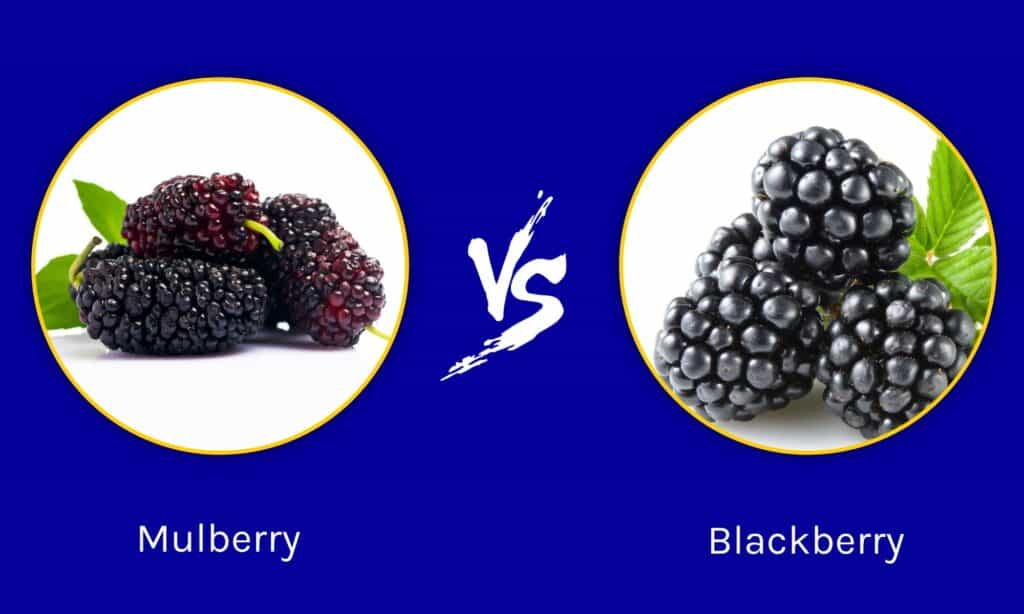
| Mulberry | Blackberry | |
|---|---|---|
| Classification | Morus | Rubus |
| Description | Comes in a variety of colors, including black, white, and red. Berry is elongated and oval shaped, with many small drupelets. | Rich black colorations and a slightly elongated berry. Composed of many small drupelets and changes color while on the vine. Typically smaller than mulberries overall, especially in length. |
| Uses | Used in jams and pies as well as other culinary purposes, particularly wines and tea. Also the primary food source for silkworms | Used around the world in jams, pies, and more, or eaten raw. Bitterness makes it less palatable to some, but many blackberry varieties are sweet |
| Hardiness Zones | 4-10; grows on a tree | 5-10; grows on a bush |
| Flavor and Texture | Varies depending on the color and variety, but typically equal parts sweet and sour. Very likely to stain | Sour and earthy, with a bit of sweetness. Soft to the touch and juicy, and may stain hands or clothes |
Key Differences Between Mulberry vs Blackberry

Mulberries grow longer and more elongated overall compared to the average blackberry.
©iStock.com/syaber
There are many key differences between mulberries and blackberries. For example, mulberries and blackberries belong to different plant species from one another. In addition, mulberries grow on trees, while blackberries grow on bushes. The shape of the mulberry is much longer than the shape of the average blackberry. Finally, mulberry plants are a primary food for silkworms, while blackberries are not.
Let’s go over all of these differences in more detail now.
Mulberry vs Blackberry: Classification
Despite their similarities in appearances, mulberries and blackberries are different classifications entirely. For example, mulberries belong to the morus family, while blackberries belong to the rubus family. Both of these berries have a number of different types of variations within their own classifications, but it is important to note that these two plants are not related!
Mulberry vs Blackberry: Description
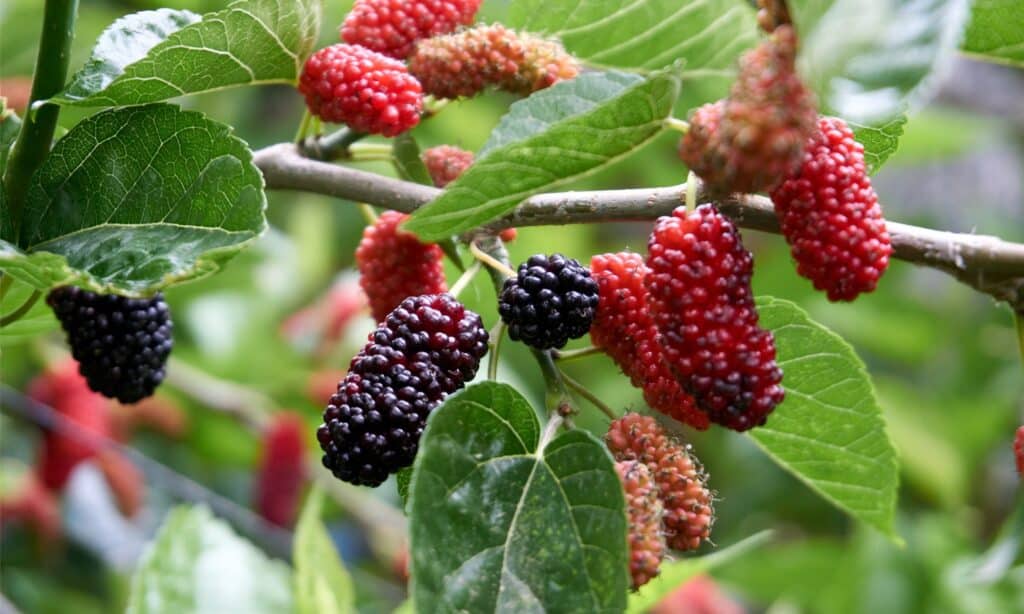
Mulberries grow on mulberry trees, while blackberries grow on bushes.
©iStock.com/altanakin
Both mulberries and blackberries grow similarly in shape and color, but there are some physical description traits that you can keep an eye out for in order to tell them apart. For example, mulberries grow longer and more elongated overall compared to the average blackberry. In addition, mulberries come in a number of different colors, including white, purple, black, and red, while blackberries only come in a dark purple hue.
Besides the physical appearance of these berries as individuals, mulberries and blackberries grow differently and should be obvious when found in the wild or in your yard. For example, mulberries grow on mulberry trees, while blackberries grow on bushes. This is a key and important distinction between these two plants, and it also leads to them having different classification in the first place!
Mulberry vs Blackberry: Uses
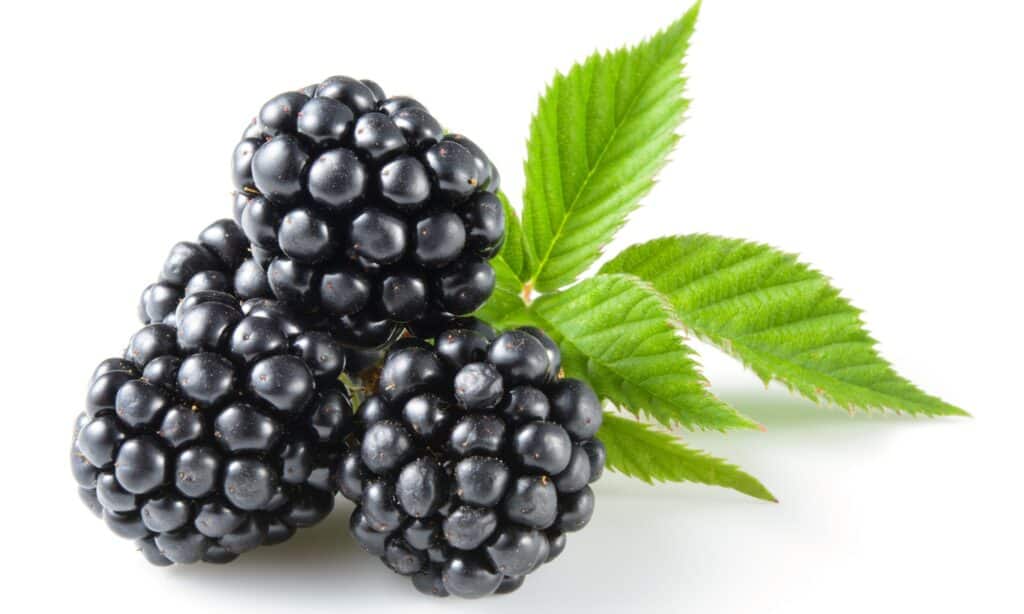
There is a certain variety of silkworm that only consumes nutrition from the mulberry tree, while the same can’t be said for the blackberry plant.
©iStock.com/Tim UR
The good news is, you can use mulberries and blackberries interchangeably in terms of their culinary uses. For example, both mulberries and blackberries are popular in jams, pies, teas and other uses. However, mulberry wine is likely more popular than blackberry wine, and there is one other very important difference in the use of these two berries.
There is a certain variety of silkworm that only consumes nutrition from the mulberry tree, while the same can’t be said for the blackberry plant. While they may or may not eat the physical berries found on the mulberry tree, silkworms rely on this particular plant in order to produce silk. This is a unique and fascinating facts that mulberries and blackberries do not share with one another!
Mulberry vs Blackberry: Hardiness Zones
If you are interested in growing either one of these plants in your own backyard, it is important to know what preferred zones the mulberry and blackberry plants prefer to grow in. For example, mulberry trees grow in hardiness zones 4 through 10, while blackberries grow in hardiness zones 5 through 10. You may find that some varieties of either of these plants are better suited to certain climates, so be sure to choose a specific option that works best for your area!
Mulberry vs Blackberry: Flavor and Texture
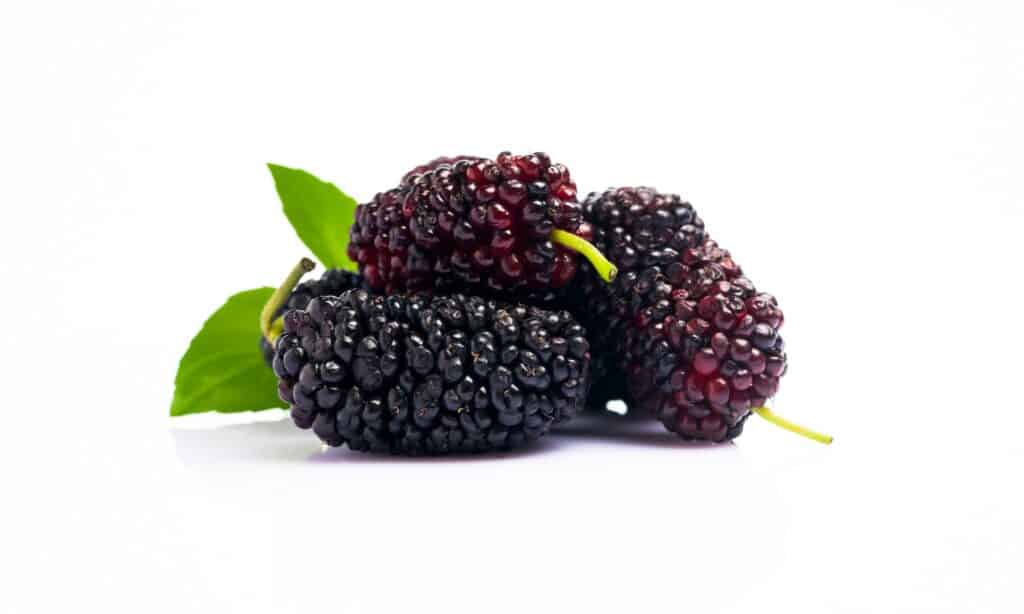
Mulberry trees grow in hardiness zones 4 through 10, while blackberries grow in hardiness zones 5 through 10.
©iStock.com/banusevim
When it comes to the flavor and texture of mulberries versus the flavor and texture of blackberries, these two berries are strikingly similar to one another. However, many people believe that the mulberry is more balanced in its sweet and sour flavors compared to the average blackberry. No matter what, both of these berries can stain your palms or clothes, though the mulberry tends to be a bit more powerful in its pigments compared to the average blackberry.
What Kinds of Wild Berries Are Edible?
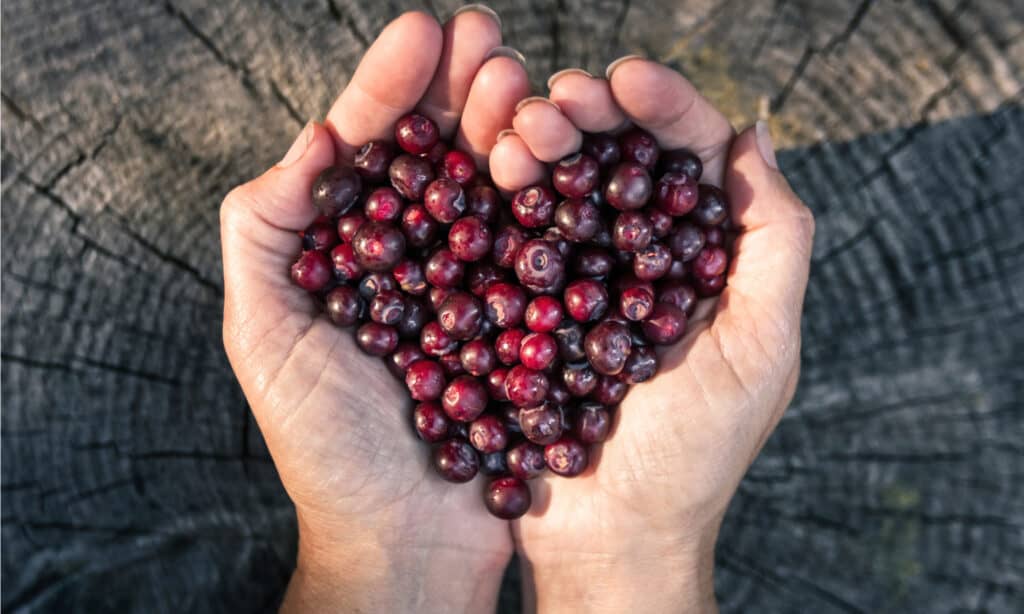
Huckleberries are among those growing in the wild that are safe for human consumption.
©Nature’s Charm/Shutterstock.com
Planning a nature walk or a camping trip? You may come across wild berries and wonder whether or not they are poisonous or safe for consumption. While we are not encouraging you to tempt fate, below is a list of 13 types of edible wild berries that, if identified properly, would be safe for human consumption.
- Chokeberries
- Chokecherries
- Wild Strawberries
- Salmonberries
- Thimbleberries
- Wild Raspberries
- Huckleberries
- Saskatoon Berries
- Wild Blackberries
- Mulberries
- Bearberries
- Elderberries
- Cloudberries
The photo featured at the top of this post is © iStock.com/altanakin
Thank you for reading! Have some feedback for us? Contact the AZ Animals editorial team.






